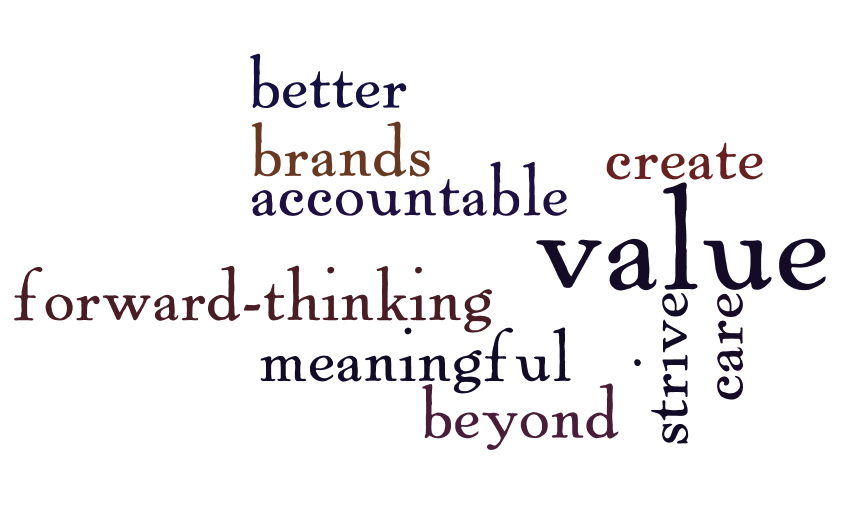 By: Ilaria Pasquinelli, Twitter: @ilaria78, international marketing consultant for the textile and fashion industry.
By: Ilaria Pasquinelli, Twitter: @ilaria78, international marketing consultant for the textile and fashion industry.
“Marketing used to be about creating a myth and telling it. Now it is about finding a truth and sharing it”, Marc Mathieu, VP Marketing at Unilever said at the recent Sustainable Brands conference in London. Finding a truth and sharing is what “better” brands do. Better brands are those brands that will ensure their long-term existence, that will go beyond their founders and their children. How? By taking better decisions and looking at the bigger picture.
What does this mean?
Taking better decisions means creating value for all the parts (people, entities etc.) involved in the brand’s life. The quality of products and services associated with the brand will, as a consequence, be better. As the founder of Patagonia, Yvon Chouinard, repeatedly says: “I do not think you can make a great quality product without having a great quality work environment. It’s all linked: quality product, quality customer service…quality of life of your employees, quality of life for all living things”.
Better brands put sustainability at the heart of their essence and positioning at a condition: they stay true to them. As an example, H&M launched their pioneering eco collection, Nature Calling, made of organic cotton, in the UK in 1995. The attempt was incredibly unsuccessful. It seems that the garments part of the collection were all shades of a boring brownish. Imagine how disappointed must have been their customers that spend time in their giant, multi-storey shops seeking latest fashion trends at the best price.
Looking at the bigger picture means two things.
The first, that brands should ask themselves how they expect the market at large to look like in 10, 20, 50 years time. What will their most dangerous risks be? Will they have access to resources? What will matter to consumers? Considering more than one scenario and finding alternative solutions is just a starting point for brands that want to be proactive. In a mutated scenario brands like Primark could re-engineer their business model and become a best practise of low impact.
Looking at the bigger picture, for brands, means also going beyond their direct operations in terms of environmental and social impact. We know that, for a clothing company, the biggest negative impact is upstream, at a fibre and spinning stages (18% and 16% of the whole impact), and downstream, at a usage level (39%), where consumers have full control. This is where brands have to push boundaries: only with disruptive change and collaboration with all stakeholders, companies will really influence others’ decisions.
Talking particularly about having an impact on how consumers think and act is incredibly challenging not the least for the widespread mistrust that people have in brands and companies. And the value-action gap, or the divergence between what people say and what they actually do, is where the headache of better companies’ marketers starts. 53% of consumers would pay more for products produced in a more responsible way but how many actually pay more for it? Too many factors affect our shopping decisions and, after all, consumers are people and emotions play an important role when they shop, particularly fashion.
So why bother? There is not one answer yet, possibly, many. In an era of information and product overload, brands and the worlds they propose are what really matter to people. 72% of consumers worldwide trust companies more if they produce more responsibly. There will be no space for non-responsible brands because they will be boycotted by NGOs with the help of their suppliers and consumers (see Detox Campaign and Zara or Labour Behind the Label and Adidas). The disadvantage of these brands will grow bigger as better brands will be prepared for the toughest scenarios and will lead in product innovation. These brands will be in the heart of minds of all of us and will bear the responsibility of making our life easy to change behaviour.

